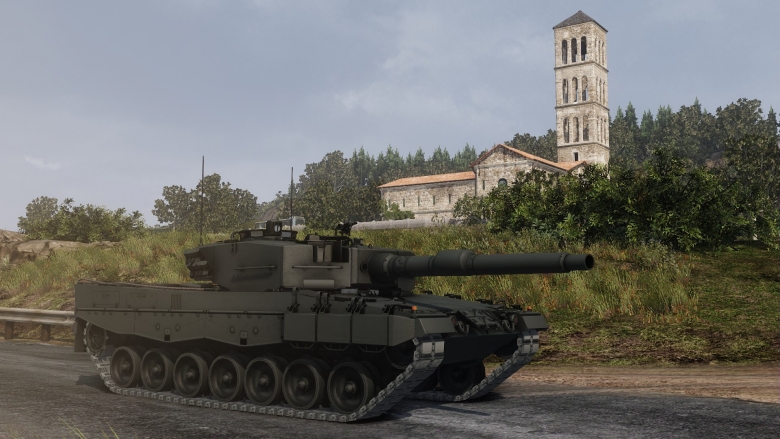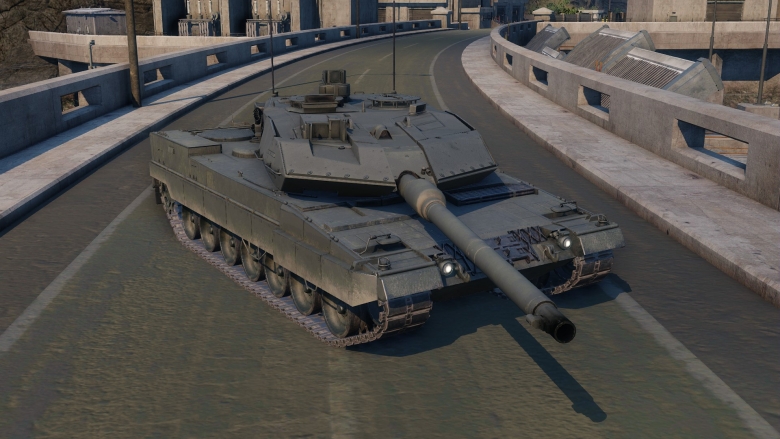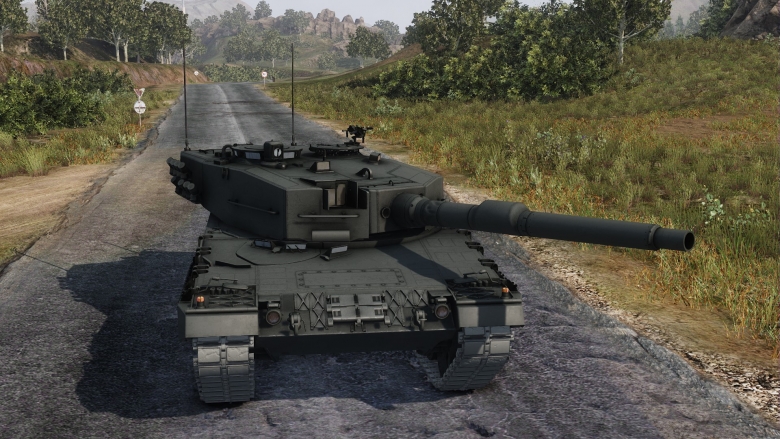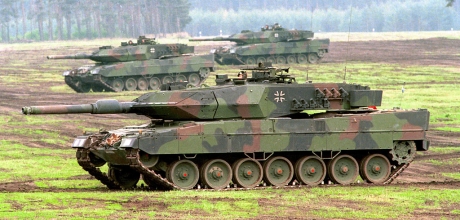
In the first part of the interview, German player ADSL explained how he became a tanker and what it was like to fire his first round in a Leopard 2 MBT. Today, he will explain what it's like having to clean up the "Iron Pig", as he calls it.
Is there anything you disliked about the service?
You know, there are plenty of tasks in and around a tank that could be considered annoying. Can I really say I disliked some of them? Sure. But after being away from the force for some years, it’s hard to remember. Actually, the good moments and funny things are more pronounced in my mind then the bad ones.
Many people might think the crew just drives the beast around.
No! That’s entirely wrong.
The crew has to do nearly everything and only some technical things that are really complicated will be done by maintenance or technical departments. Of course, every tank battalion had its one maintenance area and crew with some recovery vehicles. But the more common things, like changing the wheels or return rollers, changing track parts or sprockets, are mostly performed by the crew.

I liked and enjoyed the work on the tracks – maybe we can talk about that later – but the most annoying part was cleaning the beast. We used many names when referring to our tanks. We didn’t say “We are going to the Leopards” – we often referred to the tank as “Eisenschwein” (Iron Pig). Why? Well, it’s made of metal, it’s heavy and it likes the mud and to play in it like a pig. So that’s why we liked to nickname the Leopards that way.
Cleaning was always an unpleasant job – well, just like your car, you need to wash it from time to time. Now I guess many people will laugh and say “What the hell, look at the crazy Germans, they wash their tanks!”
Yes we do! The reason for that is easy. When we have been outside, we have usually travelled through areas where there were no cars or streets. Training areas for tanks are just big mud boxes, we feel great in them and we can do what these things have been built for. The mud usually covers the entire tank in the process and the suspension accumulates so much sand and dirt that you can easily fill a truck with it and the same goes for the engine deck (the location of the engine is often referred to as Top Deck, which comes from the plate covering the engine).
You have no idea where the sand and dirt can get to – when driving a tank, you will soon learn that both can get into places you can’t even imagine. This dirt does not only fall off a tank by travelling on a road, but will also be brought back to the barracks. If 14 tanks that had been out in the mud for 1-2 days returned to barracks, it would look like they had brought back the entire training area with them. So no, before going back, the first stop is the tank cleaning facility.
Most training areas usually have such a facility; we in Munster had a big one as well. So, here’s how it works: there are some similarities to a car wash. There are many spots where tanks go in front first and park. Left and right of the tank you will find very big water hoses. No, you won’t find a high pressure compressor there like in your local car wash! But the water hoses are of the same type the fire department uses, with the same nozzle. The pressure is strong enough it could blast away a human hit by it, so no need for a compressor.

Before you start cleaning the vehicle, you put all the things which are mounted on the top and don’t like water inside, for example, the AA machine gun on the loader’s hatch, antennae and such. Closing the hatches will also pressurize the turret seals (Leopard 2A4), preventing water from coming in through the turret ring. The driver’s hatch should be closed and sealed as well and finally, the engine compartment has to be sealed by using the fording hydraulics. The fording hydraulics will seal all air intakes and parts of the engine deck against water. Usually, they are used when going through bodies of water or even when diving in completely. In this case, the air intake is performed via the crew compartment and a very long funnel is placed on the commander’s hatch (more about this later). Anyhow, after everything is sealed and mostly done by 2 of the 4 crewmen, we begin to remove the side skirts.
The side skirts provide protection against HEAT shells to the upper parts of the tracks and suspension. They are, however, also a number one spot when it comes to collecting sand and dirt. The side skirt on a Leopard 2 is split into 2 parts. One is the so-called heavy skirt and is located in the front arc of the tank. It is made from the same metal as the armor and is extremely heavy. The second part, behind that, is the light skirt, which protects the rest of side until the rear end – this one can be moved easily.

There are some security bolts that you have to remove and then you simply tilt the skirt on its moving joint 90° up. The frontal part is more annoying. You need to remove a big bolt, which secures the segmented part of the skirt. As soon as the skirt can be moved, you need 2-3 guys, one on the top of the tank and two on the ground. The fourth member will remove the final securing bolt, only as far as that segment can be moved or pulled up. As soon as the skirt moves in its joints, the two guys below and the one on the top start moving the skirt 90° and securing it directly with 2 bolts. The skirt is very heavy - it weighs around 150kgs per segment, so one person can easily get crushed, which is why it’s forbidden to do it alone. The newer version of the Leopard 2 tank (the A5 and the A6) has a modified system, which is a little bit easier to handle. Oh, by the way, the heavy skirt is divided into 3 segments on each side, so you need to do this 6 times.
After all this is done, you can actually start cleaning the tank. Extra special care needs to be taken when it comes to the suspension, road wheels, rollers and sprockets. All the dirt needs to be removed. The tracks come after that and once the lower hull is more or less clean, you put down the light skirts and clean the upper hull. Here you do not only spray water, you also have to you use brushes (very similar to the ones you use to clean your car, but bigger) to brush the sand off the tank. Believe me, this is a job you can do for several hours and still some sand will come down. We have always said that Army paint has a certain tendency to attract dirt and sand.

And believe it or not, but here the commander works just as hard as the rest of his crew. The tank needs 4 guys, not 3 and a boss. Even as a platoon leader, you need to care for your own tank. There is no leeway for carrying a higher rank… just work! This cleaning work usually takes 2-3 hours with preparations and putting all the things back as they should be. Wearing our rain protection was really necessary as you got damn wet, even without having another tank crew around seizing the opportunity to start a water fight for “Who gets to be the wettest guy in the team”. You look like hell after such an ordeal and you feel like a pig.
The final job is to clean the spot you parked on. The area the crew uses to clean the tank is usually full of dirt that needs to be removed. So we spray the dirt into the collecting compartment and prepare the area for the next crew. I’m not sure how many hundreds of times I did this, but it was annoying, dirty and, especially on colder days, really frustrating. In some temperatures the area would close, so in winter we could sometimes skip this nasty mandatory job.
To be continued – in the next part, we’ll learn how the Leopard 2 fares when compared to the American M1 Abrams during training exercises...








